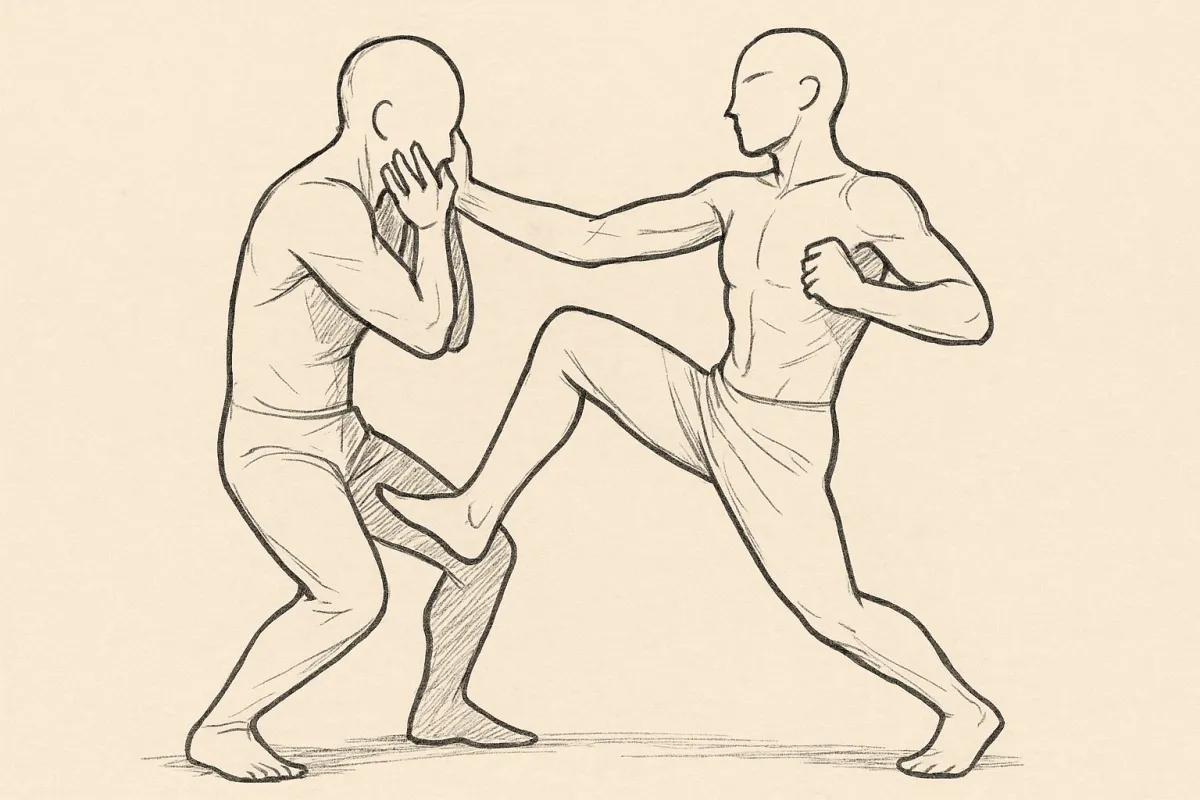
Moving From Freedom: A Hidden Key to Superior Self-Defense
When most people think about self-defense, they picture memorizing techniques:
“If he grabs you like this, you respond like that.”
While that kind of training has value, there’s a deeper principle that creates far more control, adaptability, and real-world stopping power. It's known in some circles as:
Moving From Freedom.
And it’s not just a tactic. It’s a mindset shift that instantly puts you in control of the encounter — both physically and mentally — even when an attacker believes they’ve got the upper hand.
If you're ready to explore this idea a little deeper, keep reading...
What Does “Moving From Freedom” Mean?
In any attack, whether it’s a grab, a punch, or multiple people trying to hold you down, it’s nearly impossible for an attacker to control all of your body at once.
Even if they lock down one limb or part of your body, something remains free: a hand, a foot, your hips, your head position.
Moving from freedom means immediately recognizing what’s still free, and building your counterattack from there. Instead of panicking over what’s trapped, you focus on what’s available.
Even mentally, unless you freeze from stress, you still have cognitive freedom. Your mind can assess, adapt, and act, provided you’ve trained for that moment.
How Moving From Freedom Differs From Other Training
Many self-defense programs teach reactive sequences:
“If he does X, you do Y.”
For example, if someone grabs your throat with both hands, traditional training says: strip the hands, push off, or trap and strike.
Moving from freedom works differently.
You might not even bother with the hands on your throat.
Instead, you can attack what’s holding up the attacker, their legs. This can destabilize their entire structure, and their choke collapses automatically, giving you great control over the situation.
Create Instant Escape Pathways
Because you’re not waiting to follow a script, you create escape pathways instantly.
Imagine this…
Your assailant throws a punch. But instead of simply blocking or dodging, you step slightly offline and strike their knee or hip mid-motion. The hit compromises their structure and balance before their punch even lands.
This unexpected off-balancing leaves the attacker vulnerable and scrambling to recover their own safety, while you’ve already moved into a superior position to finish the conflict.
Breaking Their Structure… And Their Mind
Breaking structure isn’t just about joints and balance.
It’s about breaking the attacker’s mental framework.
Anyone who chooses to attack usually does so with a mental narrative:
“I’m stronger. I’m in control. You can’t stop me.”
When you respond in ways they don’t expect such as targeting their balance and attacking from unexpected angles, their plan tends to fall apart.
Their confidence collapses. Their aggression stalls. And now they’re playing defense.
But you must act with confidence and precision.
That’s why training BEFORE you need this knowledge is so important.
The Power of Role Reversal: Prey Becomes Predator
This is any interesting piece of the puzzle.
Attackers target people they believe are weaker, softer, or unaware. That’s part of what gives them the confidence to launch the attack.
What they don’t expect is for their "prey" to transform instantly into a superior predator.
When you understand how to move from freedom, fast, unconventional, and aggressive, you flip the script. You become the dominant force. The attacker quickly realizes they’ve miscalculated, and that realization often ends the fight before it escalates further.
There is a key concept here you don’t want to overlook:
Moving from freedom starts in the mind.
If your thoughts are bound up from high levels of stress that come along with protecting yourself, your likelihood of success is in danger. This means progressively adding stress to your training will be a key to future survival.
Real-World Example
Picture this:
You’re backed against a wall. An attacker has both hands around your throat, pressing you into the coarse bricks.
Many people will instinctively try to pull the hands off. Because that’s where the immediate threat is perceived to be.
But your legs are free.
So you use one foot to drive against the inside of your attacker’s knee, forcing it outward (external hip rotation).
That one small movement destabilizes their hips, spine, and shoulders, likely breaking their choke without you ever touching their hands.
And because it’s so unexpected, their ability to recover is compromised and their attack falls apart.
How to Start Training This Skill
Whether you’ve trained in rigid, technique-based systems for years, or this is your first journey into self-defense, you can quickly build your moving from freedom skills just like learning your A, B, Cs with the following format:
1️⃣ Learn Joint Disruption
Understand how joints stabilize or destabilize structure. Small shifts in joint position can completely unbalance a person.
2️⃣ Start Static, Then Dynamic
Begin with slow, static drills to understand how our skeletal structure works on a fundamental level. Then add movement, resistance, and dynamic pressure gradually.
3️⃣ Think Two or Three Steps Ahead
Train your mind to ask:
“What’s holding them up right now? What might they be expecting me to do? What joint or position can I disrupt first?”
4️⃣ Pressure Test
Have partners place you in uncomfortable positions (grabs, pins, holds). Look for your body’s freedom points in each scenario and apply the principles we’ve been talking about.
Your ultimate goal:
Fluid movement.
Non-linear counters.
Complete control of the attacker, mentally and physically.
Why This Approach Matters
You’ll disrupt both the body and mind of your attacker.
You’ll escape from positions others consider hopeless.
You’ll prevent freezing under pressure.
You’ll adapt to the unpredictable reality of real-world violence.
Learning to move from freedom can transform you from fear-based reactions to intentional, proper, and powerful responses.
Interested in learning how to train this way?
I offer both in-person coaching and video-based guided training for responsible adults who want to develop real, adaptable self-defense skills.
👉 Reach out anytime for more info on programs and availability.
